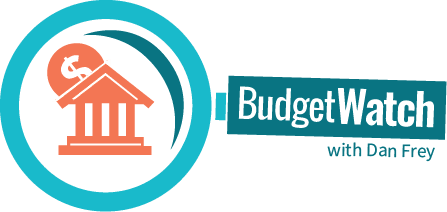by Dan Frey, Director of Government Relations
It is my sincere pleasure to be able to say to you that as of last Thursday, July 6, 2017, Illinois has in place a budget for the current fiscal year. This means that the Illinois Budget Impasse, which had held our state hostage since 2015, has come to an end.
While this does not mean an end to the partisan fighting in Springfield or that there is not the possibility of further trouble ahead (and coming shortly, I’m afraid), it does mean that we as a state can start to focus on the work ahead, and that payments from the state to providers can now be made.
First, how we got here: In late June, 2017, Gov. Bruce Rauner called for a 10-day Special Session. During that time, legislative leaders met to hash out a budget and address other legislative demands made by the governor. Though that special session ended without a resolution, legislators in both houses stayed and worked in Springfield through the July 4 holiday and passed a balanced budget and revenue package to fund that budget. After vetoes from the governor on July 4, the Senate promptly overrode those vetoes the same day, with the House doing the same on July 6, finally bringing an end to the over two-year long budget impasse.
The passage of the budget and the revenue package, as well as the override of the governor’s vetoes, relied on both Democrats and Republicans, and in doing so showed that the hatred of this budget stalemate was indeed a bipartisan issue. As a result of the bi-partisan negotiations to pass revenue and a budget, the state’s individual income tax rate was increased from 3.75% to 4.95%. The tax rate that was passed in 2011 and expired in 2015, for comparison, was 5%.
In the budget, as it related to HIV services, the appropriations were as follows:
FY 17:
- HIV lump sum (General Revenue Fund – GRF): $14,688,200
- For grants and other expenses for the prevention and treatment of HIV/AIDS and the creation of an HIV/AIDS service delivery system to reduce the disparity of HIV infection and AIDS cases between African-Americans and other population groups (GRF): $975,000
- Supportive housing (GRF): $8,456,600
FY 18:
- HIV lump sum (GRF): $25,415,000
- For Expenses of Programs for Prevention of AIDS/HIV (Public Health Services Fund): $6,250,000
- Surveillance (Public Health Services Fund): $1,750,000
- Ryan White (Public Health Services Fund): $55,000,000
- For grants and other expenses for the prevention and treatment of HIV/AIDS and the creation of an HIV/AIDS service delivery system to reduce the disparity of HIV infection and AIDS cases between African-Americans and other population groups (GRF): $1,218,000
- African-American AIDS Response Act (AAARF): $200,000
- Quality of Life (Quality of Life Fund): $1,500,000
- Supportive housing (GRF): $13,429,400
- Supportive housing (Health & Human Services Medicaid Trust Fund): $3,382,500
So, where do we go from here? Things may be heading to rough waters, I’m afraid. While it is likely that the override of his vetoes was viewed, strangely as the best case for Gov. Rauner (he gets to both spend the money and rail against a tax increase), his administration has begun to reset for the next year and half as we approach the 2018 election. He has parted ways with his chief of staff and brought in a now-former president of the very conservative think tank Illinois Policy Institute, which railed against a tax increase and advocated a cuts-only approach to balancing the budget, to be his new chief of staff. Also, Republican Rep. Steve Anderson (Geneva), who was one of the GOP members who voted against the governor, has been removed from his leadership position as House Republican Spokesperson.
Also on the horizon is a fight over SB 1, the reform of Illinois’ school funding formula. This bill passed both Houses in May of 2017, and the governor has labeled it a “Chicago Bailout” and pledged to veto it. The education funding provisions found in the budget are dependent on this bill becoming law, so any veto of this legislation, if it were not overridden, could imperil schools’ chances of opening in the fall. The bill has yet to be sent to the governor for his signature or veto, but should he hold to his veto promise, as appears likely, another crisis could be in the making.
Lastly, though the bills passed did contain some funds to pay down the backlog of bills, it did not fund all of those, which currently stands at nearly $15 billion, and though the budget and revenue were viewed as positive developments by the bond houses, they have stated that they are still considering moving Illinois to junk bond status, which would be the first time in the history of the nation that a state was given that designation.
So, that’s where we are today. The good news is that services rendered to the state can now be paid for; we have a budget and the revenue to fund them. That is cause for a sigh of relief, a reset, and then preparing ourselves to ensure that this never happens to our state ever again.
About the blog
BudgetWatch is a weekly update from the AIDS Foundation of Chicago’s on-the-ground team in Springfield about the state’s longstanding budget impasse. Follow along at aidschicago.org/budgetwatch.



